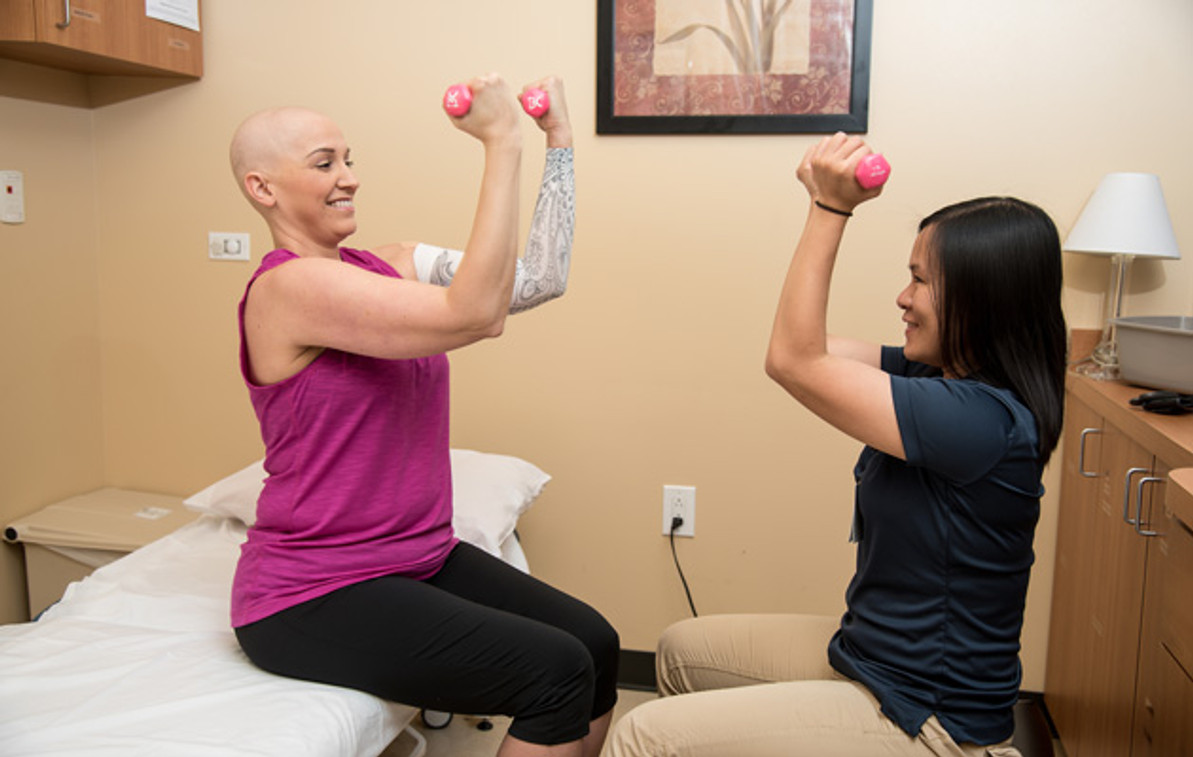The Benefits of Physical Therapy for Cancer-Related Complications
Cancer and its treatments, such as surgery, chemotherapy, and radiation, can lead to various physical complications that significantly impact a patient's quality of life. Physical therapy (PT) plays a crucial role in managing these complications, helping patients regain function, reduce pain, and improve overall well-being.
Managing Cancer-Related Fatigue
One of the most common side effects of cancer treatment is fatigue. This type of fatigue is often more severe and persistent than everyday tiredness and can significantly hinder daily activities. Physical therapists design individualized exercise programs that include both aerobic and resistance training that can be as part of a At-Home Wellness program. These exercises help boost energy levels, improve cardiovascular health, and increase muscle strength, thereby reducing fatigue and enhancing daily functioning.
Reducing Pain and Discomfort
Cancer treatments can cause pain due to surgery, radiation-induced fibrosis, or chemotherapy-induced neuropathy. Physical therapy techniques such as manual therapy, therapeutic exercises, and therapeutic modalities like heat and cold therapy can help manage and alleviate pain. By addressing pain through non-pharmacological means, PT can reduce the need for pain medication, which often comes with its own set of side effects.
Improving Mobility and Flexibility
Surgeries and prolonged bed rest can lead to stiffness and reduced range of motion in joints and muscles. Physical therapy focuses on restoring flexibility and mobility through stretching exercises, joint mobilizations, and other manual techniques. Improved mobility allows patients to perform daily tasks more easily and reduces the risk of further injury.
Enhancing Strength and Endurance
Cancer treatments can lead to muscle weakness and decreased endurance, making everyday activities challenging. PT includes strength training exercises that target weakened muscle groups, helping patients regain muscle mass and strength. Endurance exercises improve overall stamina, enabling patients to engage in activities for longer periods without excessive fatigue.
Lymphedema Management
Lymphedema, a common complication of cancer treatments, particularly those involving lymph node removal or radiation, results in swelling due to fluid retention. Physical therapists use specialized techniques such as manual lymphatic drainage, compression therapy, and specific exercises to reduce swelling and manage lymphedema effectively. These interventions can significantly improve comfort and mobility for patients dealing with this condition.
Balance and Fall Prevention
Cancer treatments can affect balance and coordination, increasing the risk of falls. PT includes balance training exercises and gait training to enhance stability and coordination. By improving balance, physical therapy helps prevent falls and associated injuries, which are particularly crucial for maintaining independence and safety.
Psychological Benefits
The psychological toll of cancer and its treatment can be profound, often leading to anxiety and depression. Engaging in regular physical activity through PT can have significant mental health benefits. Exercise has been shown to release endorphins, improve mood, and reduce symptoms of anxiety and depression. Furthermore, achieving physical therapy goals can boost self-esteem and provide a sense of accomplishment.
Personalized Care
Physical therapists provide personalized care tailored to each patient's specific needs and limitations. This individualized approach ensures that the therapy is safe and effective, taking into account the patient's overall health, type of cancer, and treatment history. The collaborative relationship between the therapist and patient fosters a supportive environment that encourages progress and adherence to the therapy plan.
Conclusion
Physical therapy offers numerous benefits for managing cancer-related complications, from reducing pain and fatigue to improving mobility and mental well-being. By incorporating PT into the overall treatment plan, cancer patients can enhance their quality of life, maintain their independence, and improve their overall health. If you or a loved one are undergoing cancer treatment, consider speaking with a healthcare provider about the potential benefits of physical therapy.
Related Blog Post:
The Value of Testing for Geriatric Patients
Additional Information:
The Role of Exercise and Rehabilitation in the Cancer Care Plan (National Library of Medicine)
Recent Posts
-
Acupuncture vs. Dry Needling: What’s the Difference?
At first glance, acupuncture and dry needling might seem identical. Both involve inserting thin need …Jun 11th 2025 -
What Is Dry Needling? A Modern Approach to Pain Relief and Muscle Recovery
Chronic muscle pain, tension, and restricted movement can significantly impact your daily life, sign …Jun 11th 2025 -
The Kinetic Chain and Its Importance?
The kinetic chain is a key principle in physical therapy, referring to the way muscles, joints, and …Apr 18th 2025



